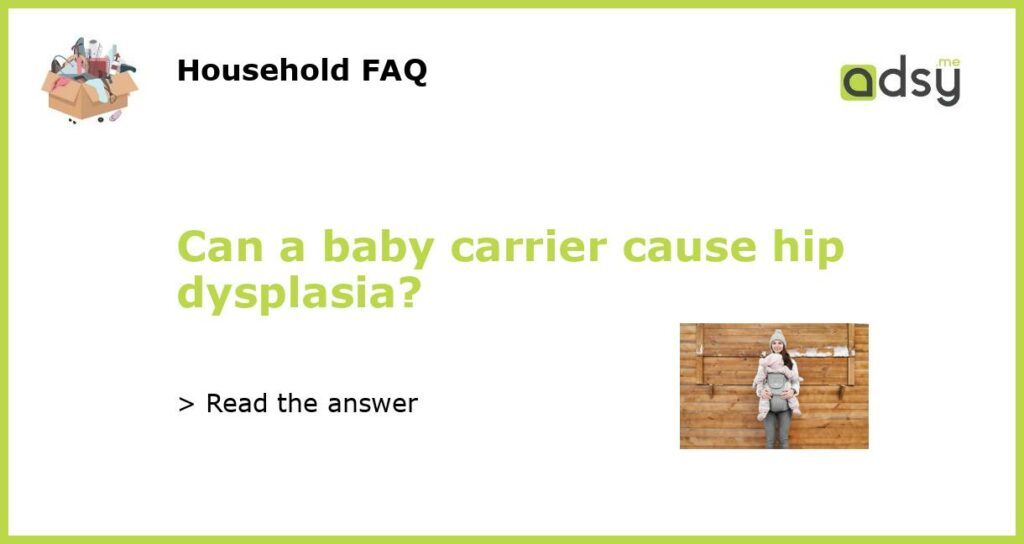What is hip dysplasia?
Hip dysplasia is a condition where the hip joint is not properly formed, leading to instability and potential problems with walking and mobility. It is most common in infants and young children and can be caused by a variety of factors, including genetics and environmental factors.
What is a baby carrier?
A baby carrier is a piece of equipment designed to allow parents to carry their babies hands-free. There are several different types of baby carriers available, including wraps, slings, and structured carriers. Baby carriers are designed to be comfortable for both the parent and the baby, and to facilitate bonding and attachment.
Can a baby carrier cause hip dysplasia?
While a properly fitting and designed baby carrier is generally considered safe for most babies, there is some concern that certain types of carriers may contribute to hip dysplasia. Specifically, carriers that hold the baby’s legs together and straight down, with no space between the legs, may put too much pressure on the hips and contribute to hip dysplasia.
How can I avoid causing hip dysplasia in my baby?
If you are concerned about hip dysplasia and want to use a baby carrier, there are a few steps you can take to minimize the risk. First, choose a carrier that is designed to support the baby’s hips and allows for a natural spread-squat position. Second, make sure the carrier is properly adjusted and fits both you and your baby well. Finally, if you notice any signs of discomfort, pain, or limited mobility in your baby, discontinue use of the carrier and consult with your pediatrician.
While a baby carrier can be a convenient and comfortable way to carry your baby, it is important to choose a carrier that is designed to support your baby’s hips and minimize the risk of hip dysplasia. By following a few simple guidelines and keeping an eye on your baby for any signs of discomfort, you can use a baby carrier safely and enjoy the benefits of hands-free bonding and attachment.






